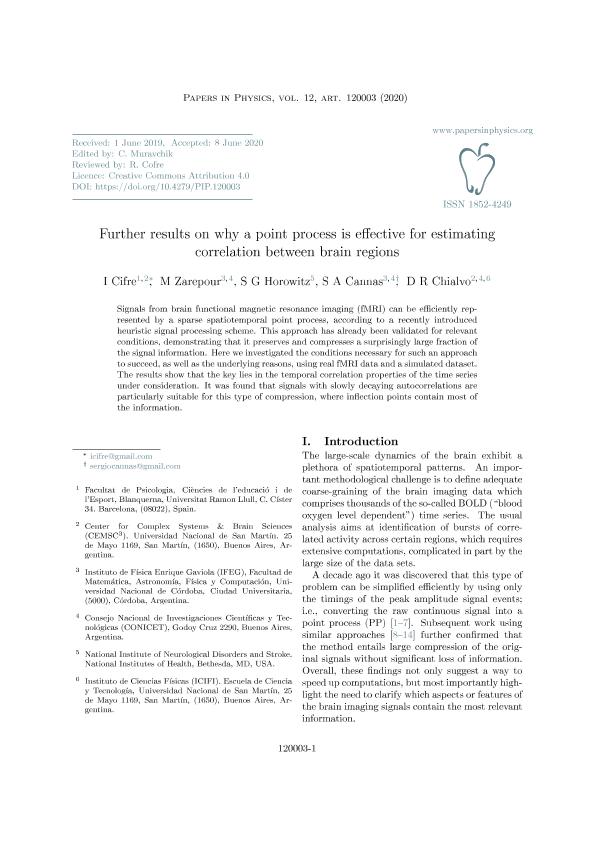Artículo
Further results on why a point process is effective for estimating correlation between brain regions
Cifre, I.; Zarepour Nasir Abadi, Mahdi ; Horovitz, S. G.; Cannas, Sergio Alejandro
; Horovitz, S. G.; Cannas, Sergio Alejandro ; Chialvo, Dante Renato
; Chialvo, Dante Renato
 ; Horovitz, S. G.; Cannas, Sergio Alejandro
; Horovitz, S. G.; Cannas, Sergio Alejandro ; Chialvo, Dante Renato
; Chialvo, Dante Renato
Fecha de publicación:
06/2020
Editorial:
Papers in Physics
Revista:
Papers in Physics
e-ISSN:
1852-4249
Idioma:
Inglés
Tipo de recurso:
Artículo publicado
Clasificación temática:
Resumen
Signals from brain functional magnetic resonance imaging (fMRI) can be efficiently represented by a sparse spatiotemporal point process, according to a recently introduced heuristic signal processing scheme. This approach has already been validated for relevant conditions, demonstrating that it preserves and compresses a surprisingly large fraction of the signal information. Here we investigated the conditions necessary for such an approach to succeed, as well as the underlying reasons, using real fMRI data and a simulated dataset. The results show that the key lies in the temporal correlation properties of the time series under consideration. It was found that signals with slowly decaying autocorrelations are particularly suitable for this type of compression, where inflection points contain most of the information.
Palabras clave:
TIME SERIES
,
POINT PROCESSES
,
FUNCTIONAL CONNECTIVITY
,
RESTING STATES
,
DYNAMICS
Archivos asociados
Licencia
Identificadores
Colecciones
Articulos(IFEG)
Articulos de INST.DE FISICA ENRIQUE GAVIOLA
Articulos de INST.DE FISICA ENRIQUE GAVIOLA
Citación
Cifre, I.; Zarepour Nasir Abadi, Mahdi; Horovitz, S. G.; Cannas, Sergio Alejandro; Chialvo, Dante Renato; Further results on why a point process is effective for estimating correlation between brain regions; Papers in Physics; Papers in Physics; 12; 6-2020; 1-8
Compartir
Altmétricas



